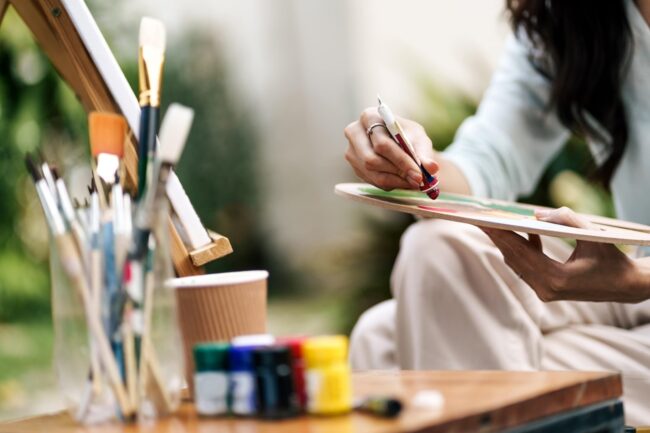In a world where teenage girls face unique pressures from social media, academic expectations, and evolving personal identities, mental wellness has become a critical area of concern. Art therapy, a form of psychotherapy that uses art media as its primary mode of communication, has emerged as a powerful tool in addressing the emotional and psychological needs of this demographic. Eva Carlston Academy reviews how art therapy works, what benefits it poses for mental wellness among teenage girls, and why it could be used as an essential service in schools and community centers.
Understanding Art Therapy
Art therapy integrates psychotherapeutic techniques with the creative process to improve mental health and well-being. Unlike traditional talk therapy, art therapy involves the expression of one’s self through the creation of art, guided by a trained art therapist. This is based on the belief that the creative process involved in artistic self-expression helps people with resolving conflicts and problems, developing interpersonal skills, managing behavior, reducing stress, increasing self-esteem, and finding insight.
The Appeal of Art Therapy to Teenage Girls
Art therapy is particularly resonant with teenage girls for several reasons. Firstly, it provides a non-verbal outlet for emotions that are difficult to express with words. During adolescence—a period marked by rapid emotional and physical changes—many find it challenging to articulate their feelings. Art offers a safe medium through which they can explore and express these emotions without fear of judgment.
Secondly, art therapy does not require any artistic talent, which encourages participation from those who might feel intimidated by the need to ‘perform’ or be judged on their artistic skills. This inclusivity makes art therapy a universally approachable tool for emotional exploration and self-expression.
Benefits of Art Therapy for Mental Wellness
- Enhanced Self-Expression and Communication: Art therapy encourages self-expression and can help teenage girls articulate complex feelings through their artwork. This process often leads to breakthroughs in therapy, as the art can reveal subconscious thoughts and feelings that may not be easily accessible through conventional dialogue.
- Stress Reduction and Anxiety Management: Engaging in the creative process has been shown to reduce stress and anxiety levels. The focus required to create art can serve as a form of meditation, helping individuals to detach from immediate concerns and manage their anxieties more effectively.
- Improved Self-Esteem and Body Image: Art therapy can enhance self-esteem by providing a tangible sense of accomplishment with each piece of artwork completed. For teenage girls struggling with body image—a common issue during these formative years—the therapy can promote a healthier self-image through projects that emphasize personal identity and self-acceptance.
- Development of Coping Skills: Art therapy helps participants learn to cope with emotional distress in a constructive way. It teaches that feelings of sadness, anger, or confusion can be acknowledged and expressed through creative work, providing a safe outlet for emotions.
Art Therapy in Action: Case Studies and Practical Applications
Several studies and practical applications have highlighted the effectiveness of art therapy. For instance, a program in a high school setting involved a group of teenage girls who participated in weekly art therapy sessions. Over the course of the program, participants reported that they felt more relaxed and less anxious, with a noticeable improvement in their overall emotional well-being.
Another case study involved the use of art therapy for a group of teenage girls dealing with severe anxiety. The therapy sessions focused on creating personal journals and mixed media pieces that expressed their daily struggles and feelings. Over time, the girls developed a better understanding of their emotions and learned healthier coping mechanisms.
Implementing Art Therapy Programs
Schools, community centers, and mental health facilities are ideal places to implement art therapy programs. To establish a successful program, institutions should consider the following:
- Hiring Qualified Art Therapists: Employing professionals with specialized training in art therapy ensures that participants receive the full therapeutic benefits.
- Creating a Safe and Inclusive Environment: The space should be welcoming and non-judgmental, equipped with a variety of art materials that encourage free expression.
- • Integrating with Existing Mental Health Services: Art therapy should complement existing mental health programs, providing a holistic approach to wellness that includes traditional counseling and therapy.
Art therapy offers a unique and effective approach to addressing the mental health needs of teenage girls. By providing a safe, creative outlet for self-expression and exploration, it can play a crucial role in enhancing mental wellness. As society increasingly recognizes the importance of mental health, the integration of art therapy into programs aimed at young people, particularly teenage girls, will be vital in nurturing a healthier, more expressive generation.
